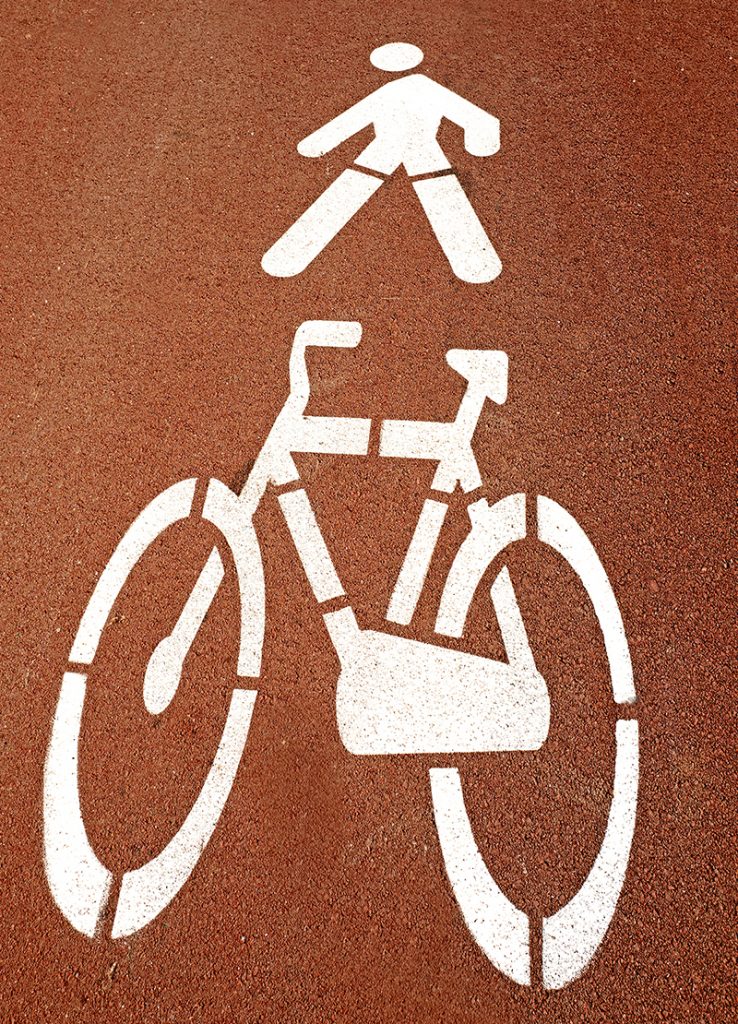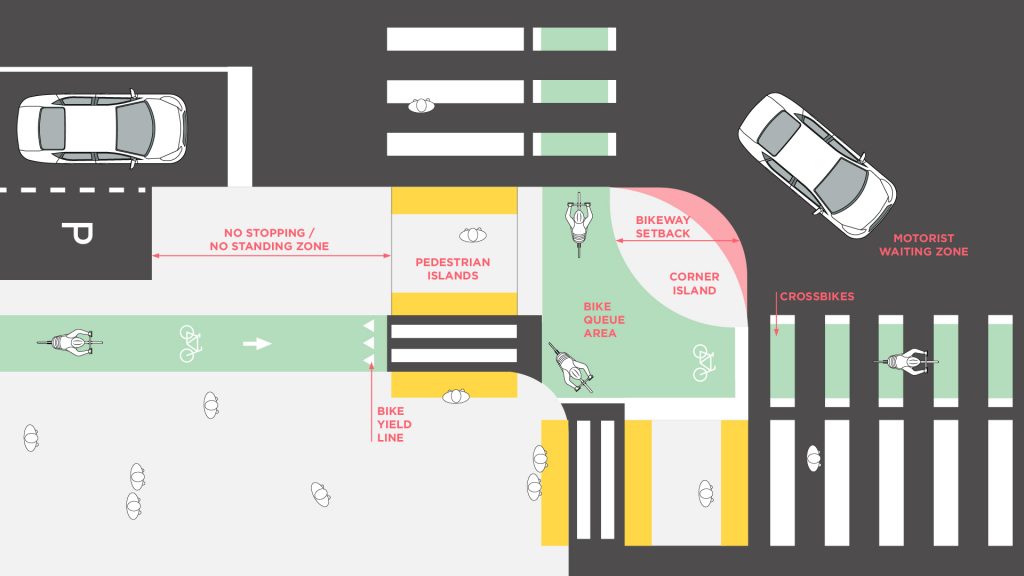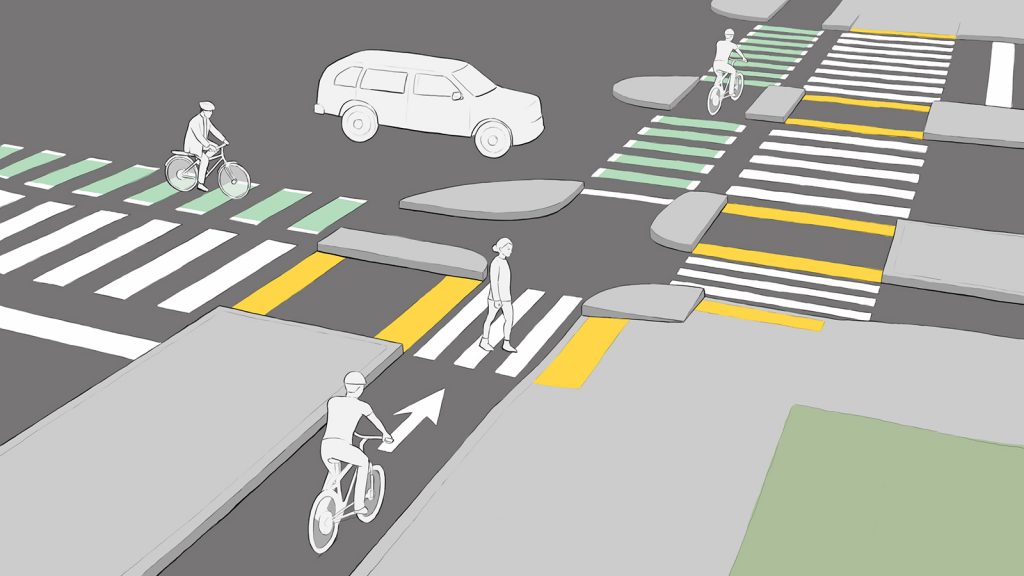
If cars and motor vehicles were once the masters of the streets, now the kingdom is divided between them and bicycles. Obviously, as more and more bike lanes have been created to facilitate circulation through cities and roads, the risk of traffic accidents has also increased, especially at intersections. Hence, new roundabouts and intersections have been developed to protect cyclists and pedestrians when they have to cross, and to help drivers see them at these tricky spots, improving circulation in the process.
Inspired by Dutch roundabouts, protected intersections are increasingly being implemented in the United States, and are designed to physically separate pedestrians, bicycles and motor vehicles. Despite their seemingly complicated design, the truth is that the idea seems to be working. According to the National Association of City Transportation Officials (NACTO), a study conducted in New York found that the number of accidents between motor vehicles and cyclists at these types of intersections was lower than at those with a dedicated turn lane and specific signs for bicycles.
The reason is that, at these types of intersections, cars are forced to drastically reduce their speed when turning, vision angles are improved and the distance and time in which pedestrians and cyclists are exposed to danger is greatly reduced. These good results were seen, for example, in San Francisco, where a protected intersection design caused 98% of drivers to yield to cyclists, and 100% to pedestrians.
How a protected intersection works
The main point in the design of this type of crossing is that the bike lanes are separated from conventional traffic. That is, at a normal intersection, cars and bikes would wait together on the road; this is not the case at a protected intersection, and islands force motor vehicles to go around the safety zone. Furthermore, cyclists traveling on these bike lanes do not join traffic when they end, but instead have an exclusive lane at that intersection and have the right of way over motor vehicles which are turning.
This separation between the two lanes makes it easier for cyclists to be seen by turning drivers, compared to conventional intersections.
On the other hand, the islands located in the corners narrow the turning angle of motor vehicles, forcing them to reduce speed to 15 or 16 km/h. And they serve, in turn, to allow bikes to wait on them while pedestrians cross. In summary, protected intersections allow shorter, easier crossings, more predictable movements and better visibility between cyclists and drivers. As a result, the intersection is more convenient and safer for people using the bike lane and pedestrian crossing.

Protected intersections in the United States
Although they are designed for large metropolitan areas, these protected intersections can also be found in university areas and vacation destinations, where bicycle circulation and the number of pedestrians can be significantly higher.
College Station, home of Texas A&M University, implemented the first unsignaled variant in the United States. A year earlier, in Austin (Texas), two protected crossings were built within the city.
More recent are those in San Luis Obispo, on the central coast of California, and Seattle. And in August another will be completed in Eugene (Oregon).
